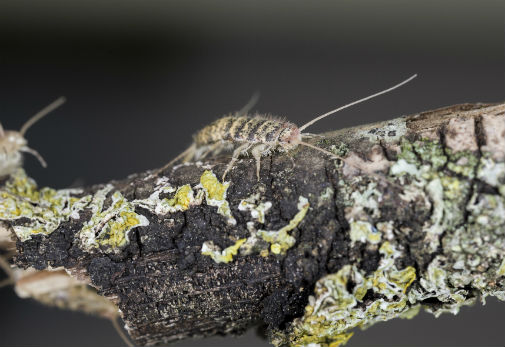Digestive ability of ancient insects could boost biofuel development
Posted on 22 February 2018

Firebrats appeared on land during the Devonian Period, some 420 million years ago.
Published in Nature Communications, the research reveals that the ability of some insects to efficiently digest cellulose could be exploited for industrial processes, such as the production of sustainable low carbon fuels to cut greenhouse gas emissions associated with fossil fuel use.
The surprising find occurred when the team at the University of York were investigating the digestive system of firebrats, which had been previously shown to thrive on crystalline cellulose, the natural fibre, abundant in straw, paper and cardboard.
Primitive insects
Professor Simon McQueen Mason, Director of the Centre for Novel Agricultural Products at the University of York’s Department of Biology, said: “Firebrats belong to one of the most primitive groups of insects; they appeared on land during the Devonian Period, some 420 million years ago. Despite this long evolutionary history, however, these insects have been generally overlooked by scientists.
“Cellulose forms the fibres that give the cell walls of plants their strength and has a high degree of structural order, making it solid and tough.”
Until now it was a mystery how firebrats had found a way to digest cellulose so effectively. In looking at their digestive system, the scientists discovered something they weren’t expecting.
Widespread
Dr Federico Sabbadin, from the University of York’s Department of Biology, said: “Inside their gut the firebrats had a group of uncharacterised proteins that make up 20% of their carbohydrate digestive enzymes.
“On further inspection, these proteins proved to be a new class of enzyme, called lytic polysaccharide monooxygenases (LPMOs), which attack crystalline polysaccharides. Our study revealed that these enzymes are used by firebrats to greatly increase the rate of cellulose digestion.”
Previously, LPMOs were only known to occur in fungi, bacteria and viruses, but analysis of this new family showed it was widespread among invertebrates.
Pest control
Scientists suggest that it is possible that these enzymes could be adopted in industrial processes to break down cellulose into fermentable sugars for biofuel production.
Professor McQueen Mason said: “These digestive LPMOs appear to have evolved from enzymes that digest a substance called chitin, which protects the respiratory system of insects.
“We found that these ancestral genes are essential for metamorphosis and that interfering with their function is lethal to insects. This could have important implications for the development of new methods to control disease-carrying mosquitoes and agricultural pests such as locusts.”
Explore more news

Nightjars at real risk from decreasing genetic diversity, researchers warn
Tuesday 22 July 2025

A ‘millet mystery’ in ancient Japan reveals a complex picture of agricultural adoption, research shows
Monday 21 July 2025

Wednesday's child is not "full of woe," new study finds, debunking popular nursery rhyme
Wednesday 16 July 2025

Optical telescope on York rooftop to advance communication between space and earth
Wednesday 16 July 2025

Study helps urban farmers create ‘light recipe’ to increase crop yield
Thursday 10 July 2025
Media enquiries
About this research
The research, funded by the BBSRC, is conducted by Professor Simon McQueen Mason, Dr Federico Sabbadin, and Professor Neil Bruce from the University of York’s Department of Biology, Professor Gideon Davies and Professor Paul Walton and Dr Luisa Ciano from the Department of Chemistry. It includes researchers from the Universities of Cambridge, Leeds and Marseille.
